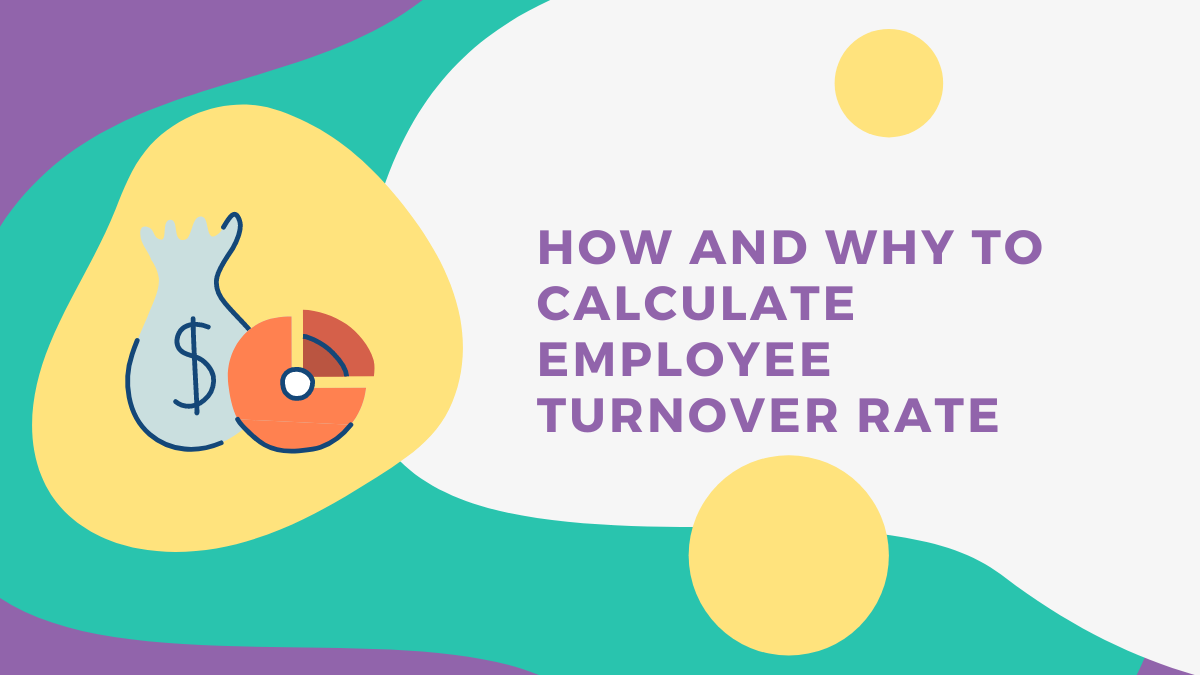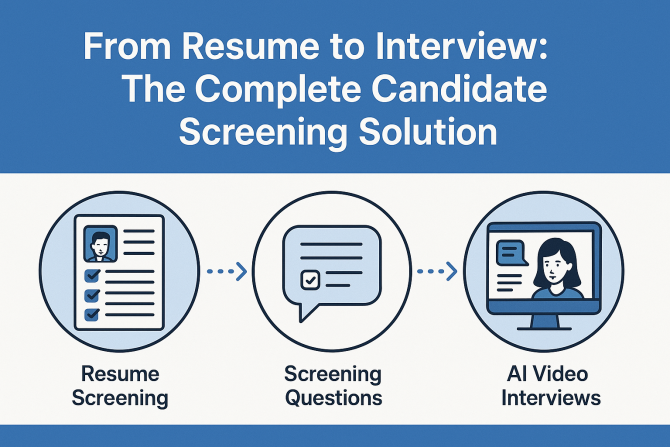
How and Why to Calculate Employee Turnover Rate
Employee turnover rate (ETR) is probably one of the most crucial KPIs in the HR industry. Turnover calculations provide you with the necessary information on how your workforce is doing.
ETRs provide investigation-prompting data: if the rate is too low, you will need to figure out the problem and try to find a solution as quickly as possible. But even if the metrics turn out to be good enough, it’s also important to know what helps you achieve a high ETR and how you can make it your strength.
What Is Employee Turnover?
Employee turnover, or staff turnover or labor turnover, is a measurement of how many workers are leaving a company. If an employee leaves, the organization will have to replace them with another one.
What Is the Employee Turnover Rate?
ETR is simply the percentage of workers who left an organization within a certain period of time, usually measured and determined on a monthly and annual basis.
Analyzing Your ETR
To better understand your ETR, you will need to answer these simple questions:
- Who are the people who leave our company?
- When do they leave?
- What are the reasons?
1. Who
Even if your ETR is lower than your industry’s average, there’s no reason to celebrate unless you can identify who tends to leave your company. If your best workers are leaving, you should take immediate action; otherwise, your company’s performance will flag. On the other hand, if your low performers are leaving, you could stand to gain by enjoying better employee engagement, productivity, and profits.
2. When
Knowing when people leave can be very useful. For instance, your new ETR can offer a lot of insight. First, it can show you whether your hiring methods are actually working. If a significant number of your new workers leave because they found their job duties different to, or more complicated than, what they were expecting, perhaps you should consider reviewing your job descriptions. Besides, consider offering other employee engagement programs if your employees struggle with finding a good work-life balance.
3. Why
When you know the reasons why your staff members leave, you can change your organization’s management style or policies in response. Exit interviews are a useful way to see whether people give similar reasons for leaving or if they offer useful suggestions for how you can improve.
Why Is Calculating ETR So Important?
As stated above, staff turnover rate is one of the most important metrics HRs use. Employee turnover rate is often a big headache to HRs and an employer due to the high costs related to high ETRs.
Without a doubt, a high ETR is an expensive problem. Whenever a worker leaves, an organization will have to use every ounce of energy (as well as money and time) to find the right person to replace the ex-employee.
Studies show that direct replacement costs may reach up to two-thirds of a worker’s annual salary, while total costs associated with a turnover range from one to two worker’s annual salaries.
Why Is It Expensive to Replace Workers?
If you haven’t dealt with replacing employees before, you probably still can’t believe that saying goodbye to one person and welcoming another can cost as much as it does. It becomes clear as soon as you realize all the losses a company suffers due to a worker replacement.
Consider the amount of time you will spend looking for a new employee. The entire time your company will be missing a worker, a certain amount of work will not get done or won’t be done on time. In some severe cases, this may lead to material losses and even damaged brand reputation.
Furthermore, the HR who’ll be trying to find a new candidate will not have time for other work, which, again, leads to delayed deadlines.
Then you’ll have to onboard the new employee and train them, which can take up to a few months. Do not forget about the ramp-up time, as new hires, especially if they have little to no similar work experience, are always less productive.
What Is a Good ETR?
Because of all the costs and expenses associated with employee turnover ratios, this KPI often has a negative connotation. Nevertheless, labor turnover isn’t a bad thing at all.
If the high ETR is a consequence of unproductive workers leaving an organization, it’s actually a good thing. However, if a company is losing its best employees, it can be a catastrophe for the organization.
That’s why it’s impossible to determine a healthy ETR – it depends on too many things, such as industry, company, and the current situation within the organization. That being said, ETR should always be calculated contextually.
Average ETR
Another problem is that turnover ratios vary significantly from one industry to another. In general, the average annual ETP in the US varies between 13% and 16%.
LinkedIn, for instance, shows that the average worldwide ETR is 11% annually.
It should be noted that for some industries like retail or hospitality, the average ETR is higher than for others due to the fact that these spheres often rely on students and part-time employees who don’t tend to stay there for long.
Is It Difficult to Calculate the ETR?
It isn’t hard, but it might seem a little complicated since there is no standard formula to determine labor turnover. If you go online, you’ll find numerous websites offering various formulas, which, of course, all show pretty similar numbers.
Now you see why HR professionals may get confused, calculating staff turnover ratios. Another problem lies in the fact that not all groups of employees should be taken into consideration when determining the ETP.
No worries; below, we’re providing one of the most used formulas and taking a look at how to calculate the rate correctly.
How to Calculate Employee Turnover Rate
To calculate ETR, you need to take the number of separations during a month divided by the average number of workers, and multiply it by 100:
ETR = #Separations/Avg.#Workers x100
The formula may seem pretty simple at first glance, but those who have never tried to measure ETP can quickly become confused with all the data and numbers. For instance, does a company use full-time equivalent (FTE) or straight headcount when calculating the number of workers and separations? And what about freelancers and extrabudgetary staff members? What if a worker is on leave or furlough? We’ve gathered all the information about each element of the formula, explaining the best practices.
1. Determine the Number of Workers
When figuring the number of workers in a company for turnover rate purposes, staff headcount is used instead of FTE. This number should include every single staff member on the payroll.
Besides, employers should also count temporary employees (that are on the company payroll as well) and those on temporary layoff, leave of absence, or furlough. The number of workers does not include freelancers or temporary employees.
An HR department is expected to report the number of employees on a regular basis, and employers should look through these reports weekly or monthly. The worker headcount may also depend on a particular day of the week, so the more often reports are made, the more precise the ETR estimation will be.
2. Estimate the Avg. Number of Workers
Next, you will need to add the total worker headcount from all reports made within the month. Divide it by the number of reports run to get the average number of workers receiving a salary that month.
Avg.#Workers = (SUM Headcount from Every Report)/Number of Reports Run
Example
The HR department of the organization ABC makes worker headcount reports four times a month or every week. The number of employees on June 1st equals 232. The number of employees on June 7th equals 234. The number of employees on June 15th equals 230. The number of employees on June 23th is 235.
Using the formula, ABC’s human resources managers will add the 4 headcount totals (232, 234, 230, 235) together and divide the sum by the number of reports (4).
(232+234+230+235)/4 = 931/4 = 232,75
For organization ABC, the average number of workers in June is 232.75.
3. Determine the Number of Separations
Now you’ll have to get a rundown of people who are leaving your company within the month. The number of separations during the month will include voluntary and involuntary terminations; however, those workers who are currently laid off or on furlough will not be included. An HR department should be able to easily filter all employees by their termination date - if any.
Example:
In June, Organization ABC:
- Terminated one staff member for cause
- Had three workers on FMLA leave
- Put two employees on unpaid furlough
- Had one retired worker
- Let go of four agency temporary employees
Only two workers should be included in the list of those who are leaving the company this month: the one terminated for cause and the one who retired. As mentioned before, only voluntary and involuntary separations within the month are taken into consideration; this does not include layoffs or leaves of absence. In addition, Organization ABC will not be tracking temporary employees on an agency’s payroll.
4. Divide the Number of Separations by the Avg. Number of Workers
What you need to do now is divide the number of separations (calculated in step three) by the average number of workers (calculated in step two), all within one month.
#Separations/Avg.#Workers
Example
Organization ABC had two separations and an average of 232,75 workers on the payroll within the month. Using the formula:
2/232,75 = 0.0086
5. Figure Out the ETR
Usually, HRs report ETR as a percentage by having multiplied the number they got in step four by 100. Let’s see how this works.
Example
0.0086x100 = 0.86%
As it turns out, Organization ABC has a June ETR of 0.86%. Great job, ABC!
6. Annual ETR
For many employers, monthly figures do not paint a whole picture of what is going on in their companies, so they prefer comparing annual numbers, as in, a year-to-date (YTD) or annual employee turnover rate.
To calculate the YTD turnover rate, HR managers will need to add all the monthly ETRs together. For example, if it’s August now, the formula for the year-to-date ETR would reflect the following:
YTDTurnoverRate= JanETR + FebETR + MarETR + AprETR + MayETR + JunETR + JulETR
The annual ETR is calculated by adding all 12 monthly ETRs for the entire year:
AnnualTurnoverRate = (JanETR + FebETR + MarETR + AprETR + ... + DecTR)
Start Measuring Employee Turnover Rate
Employee turnover rate should never be ignored by employers or HRs, as it can reveal the hidden problems within your company that were never taken into account. A high ETR goes to show that something needs to be done in terms of hiring new employees and keeping them engaged throughout the entire time they work for your company.
While Talenteria is a great tool to find the right candidates in the first place, your job as an HR manager doesn’t stop there. You should keep monitoring their productivity and level of engagement - and figure out any possible reasons that your workers leave or might want to leave your organization in the future.






